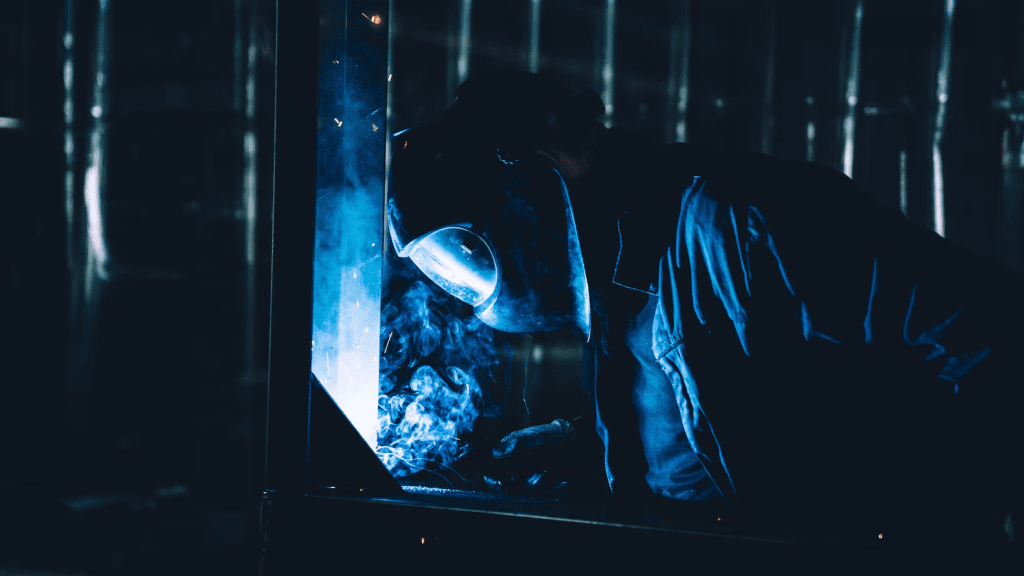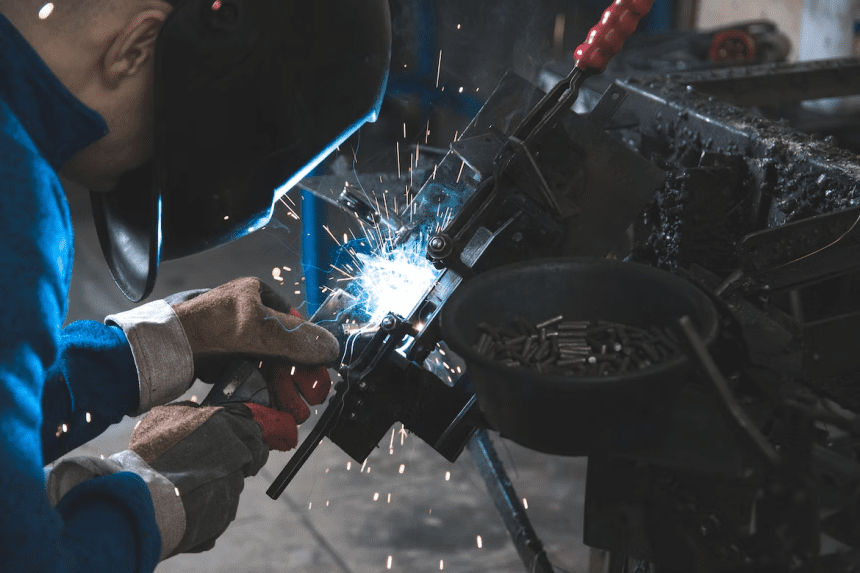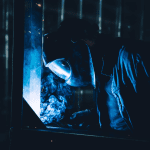Incorporating any of these eleven suggestions is highly probable to enhance the excellence and longevity of your welding work. Recommendations encompass maintaining the forward position of the electric arc and ensuring a shorter length of the electrode stick out. By adhering to these guidelines, you can elevate the overall performance and durability of your weld.
Putting to practice any of these 11 tips is likely to improve the quality and durability of your weld. Tips include keeping the arc up front and keeping your stickout short.
Wedling Town
1. Clean, Clean, Clean
The primary culprit behind the failure of a MIG weld is the presence of porosity. The most frequent trigger for porosity is the act of welding on a surface that is tainted with dirt, oil, or paint. These contaminants infiltrate the weld, resulting in perforations that resemble a sponge-like texture. According to John Leisner from Miller Electric, “Farmers often neglect to adequately prepare the metal before engaging in welding activities.” This preparation entails the removal of paint, rust, dirt, and other surface impurities through grinding or other suitable methods. It also involves diligently addressing cracks, even those that may not be immediately visible, by performing thorough grinding procedures.
2. Get a Great Ground
Joe identifies this as the most prevalent issue encountered in MIG welding. He explains, “Your welding machine doesn’t discriminate if you have an inadequate grounding. It will continue to dispense welding wire, regardless of whether your welding gun is experiencing sputtering and interruption.”
Karl Hoes from Lincoln Electric emphasizes that a welding arc necessitates a seamless flow of electricity through a complete electrical circuit. The welding current naturally seeks the path with the least resistance. Therefore, if the placement of the welding ground is not carefully considered near the arc, the current may divert through an alternative pathway. It is crucial to securely affix the clamp to bare metal as close as possible to the welding arc.
3. Keep Your Stickout Short
As a fundamental guideline, it is advisable to maintain a distance between the wire protrusion from the end of the contact tip of the welding gun, ranging from 1/4 to 3/8 inch. Jody Joe asserts, “This straightforward recommendation can yield the most significant impact on the quality of your MIG welding.”
4. Use Both Hands
Joe strongly advises utilizing both hands whenever feasible. He recommends placing the bend of the welding gun neck in one hand while gripping the workpiece with the other hand using the trigger. Emphasizing the importance of keeping the supporting hand in close proximity to the weld, he encourages swift action without hesitation. If necessary, acquiring a durable, heat-resistant welding glove is recommended.
5. Listen To Your Welder
When welding, an uninterrupted buzzing sound should be music to your ears. However, John Leisner points out that a constant hissing noise may indicate that your voltage setting is excessively high. Conversely, a loud and raspy sound could suggest that the voltage is set too low. If you hear a crackling sound resembling the rapid fire of a machine gun, it indicates that the amperage setting is too high.
6. Keep The Arc Up Front
Joe advises that to achieve improved penetration, it is essential to maintain the electric arc at the forefront of the weld puddle. However, there is an exception to this guideline when working with thin sheet metal. In such instances, it is advisable to position the arc slightly farther back within the puddle to prevent burn-through.

7. Match Drive Rolls, Gun Cable Liner, Contact Tip to the Wire Size
Interestingly, this fundamental matching process is frequently overlooked. Neglecting to align properly can lead to ongoing challenges in achieving the correct feed speed setting. For instance, attempting to use .030-diameter wire with .035 rolls will result in constant adjustments and an inability to find the optimal setting due to the larger grooves on the rolls. The same principle applies to the sizing of the gun cable liner and contact tip. It is imperative to ensure a proper match to achieve optimal performance during the welding process.
8. Push or Pull
The predominant technique involves pushing the welding gun in the direction of the weld (known as the forehand method). Forehand welding typically results in shallow penetration, creating a flat, wide, and smooth surface.
Conversely, the alternative approach involves dragging the gun (known as the backhand method). This technique generates a weld with deep penetration, characterized by a narrow shape and a heightened center.
Determining the suitable method to employ hinges upon the thickness of the metal being welded and the desired depth of penetration required for the weld.
9. Watch When Welding Out of Position
When performing vertical, horizontal, or overhead welding, it is advisable to maintain a compact weld pool in order to achieve optimal control over the weld bead. Additionally, John Leisner suggests utilizing the smallest possible wire diameter size for such applications. By adhering to these guidelines, you can enhance the precision and quality of your welds in these specific positions.
10. Replace Contact Tips Liberally
Joe emphasizes the affordability of contact tips and recommends keeping a spare pack in your toolbox while regularly replacing them. Worn contact tips often develop an oval shape, leading to an unstable arc during welding. Furthermore, if a contact tip comes into contact with the molten weld pool, it should be promptly replaced. As a general guideline for most occasional welders, it is advisable to change the contact tip after utilizing 100 pounds of wire to ensure consistent and high-quality welding outcomes.
11. Read Your Bead
Leisner highlights the valuable insights that can be gained by examining the appearance of your completed welding bead.
If the bead exhibits a convex shape or appears ropy, it is often indicative of a setting that is too cold for the thickness of the repair being performed. In such cases, insufficient heat is generated to effectively penetrate the base metal.
On the other hand, a concave-shaped bead suggests an issue with the heat input. It implies that either too much heat has been applied or the welding technique employed has led to excessive heat concentration.
By carefully observing the characteristics of the welding bead, you can gather valuable information about the welding process and make adjustments accordingly to achieve desired results.











